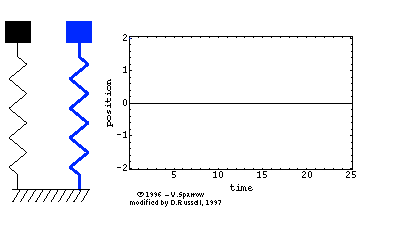Imagine a cork on a pond. Waves make the cork bob up an down but it doesn't move in the direction the wave is going. Light waves vibrate similarly, up and down and also from side to side, while the light energy moves forward. This is the characteristic of Transverse wave.

A Transverse Wave is a wave in which particles of the medium move in a direction perpendicular to the direction which the wave moves. The animation below shows a one-dimensional transverse plane wave propagating from left to right. The particles do not move along with the wave; they simply oscillate up and down about their individual equilibrium positions as the wave passes by. Pick a single particle and watch its motion.

- Transverse waves are mechanical waves. That means they need a solid, liquid, or gas medium to travel through.
- Transverse waves include all electromagnetic (radio wave, microwave, Infra Red, visible light, ultra violet., X-rays and Gamma rays)
LONGITUDINAL WAVE
- A longitudinal wave is a wave in which particles of the medium move in a direction parallel to the direction which the wave moves.
- Example: Sound waves












 Damping is the decrease in the amplitude of an oscillating system when its energy is drained out as heat energy.
Damping is the decrease in the amplitude of an oscillating system when its energy is drained out as heat energy. 










